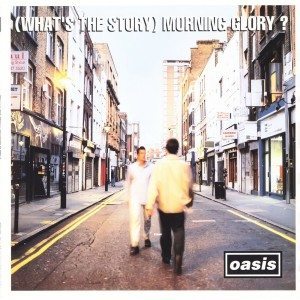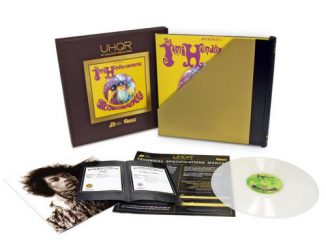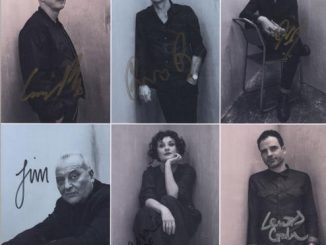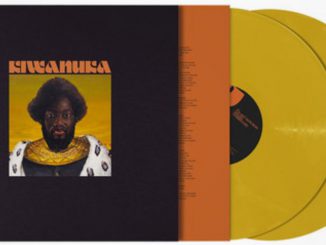
Like most indie music subgenres, modern Britpop was largely an underground phenomenon outside the U.K. during the early 1990s; despite the building momentum of bands like Oasis and Blur. In the U.S., the movement was confined mostly to diehard Anglophiles and patrons of downtown indie record stores. But all that changed forever with the release of one Britpop’s definitive albums: (What’s The Story) Morning Glory.
As Oasis’ second full-length, the record marked a new direction for the Manchester-bred outfit after the jagged, hedonistic leanings of the band’s debut, Definitely Maybe. Morning Glory utilized a far more expansive sonic landscape than its predecessor and offered a newfound penchant for massive, sweeping ballads that reflected the weariness of a band adjusting to their recently acquired fame. If it was intended to open the door to a wider audience, the plan clearly worked, as the record would go on to become one of the most important rock records of the ’90s, selling some 20 million copies worldwide and entrenching Oasis as the new kings of Britpop.
It was no mistake, either, that the record went over so well: Morning Glory offered up a plethora of singles that became staples of ’90s alt-rock radio. Most notably, the strings-backed uptempo head-bobber “Wonderwall,” featuring an inimitable Liam Gallagher vocal performance; the majestic arena-worthy ballad “Don’t Look Back In Anger” (with songwriter Noel Gallagher taking a crack at vocals); and the slow-building opus “Champagne Supernova,” where an intro of soft acoustic strumming and shimmering guitar harmonics give way to towering electric guitars and moody synth passages. It was accessible to all, grandiose in its execution and culled obvious influences from the Beatles. Audiences everywhere devoured the album.
What’s perhaps more surprising about the album’s success is the considerable tension behind the scenes during the making of the record (tracked at Rockfield Studios in Monmouth, Wales). Brothers Liam and Noel Gallagher were at one another’s throats for much of the recording, in a pattern that would plague the band in the ensuing years. In this particular case, the trouble stemmed from Noel wanting to sing lead on “Wonderwall” and/or “Don’t Look Back in Anger,” leading to a rift between the siblings that temporarily halted the sessions and required three weeks to repair. After reconciling, the album took two more weeks to complete, with Noel ultimately contributing the vocals on “Don’t Look Back in Anger.”
Perhaps the strife suited the process, especially due to the jaded, world-weary feel of the album in comparison to its predecessor. Noel Gallagher succinctly offered his own take on the album’s themes in a 1995 Rolling Stone interview, saying: “Whilst [Definitely Maybe] is about dreaming of being a pop star in a band, What’s the Story is about actually being a pop star in a band.”
The topic was certainly appropriate, as after What’s The Story’s release, Oasis’ stardom was solidified. The band’s most commercially successful release, it sold an incredible 347,000 copies its first week, making it (at that time) the second-fastest-selling album in British history, behind Michael Jackson’s Bad. It spent 10 weeks at No. 1 on the U.K. Albums Chart, and didn’t leave the top-three for an astonishing seven months, while peaking at No. 4 in the U.S. Billboard 200. By late 1996, the album was selling 200,000 copies per week and was certified four-times platinum by the end of the year, eventually reaching 20 million copies sold.
But despite the resounding commercial success, when the album was first released, critics were quick to slam the record, frequently stating it was a step back from Definitely Maybe, both lyrically and sonically, due to Morning Glory’s more eclectic arrangements, as opposed to Definitely’s raw tones. However now, with hindsight being 20/20, pundits are much more forgiving, acknowledging the lasting impact the album has made. In 2010, Rolling Stone wrote, “The album is a triumph, full of bluster, bravado and surprising tenderness. Morning Glory capped a true golden age for Britpop” and in 2012 ranked the album at 378 on its 2012 list of “The 500 Greatest Albums of All Time.” Earlier in 2005, writer John Harris noted in The Guardian the importance of the album, especially “Wonderwall,” to the overall aesthetic of the Britpop subgenre:
“When [Oasis] released Wonderwall, the rules of British music were decisively changed. From here on in, the lighter-than-air ballad became obligatory, and the leather-trousers era of rock ‘n’ roll was over.”
Few can argue with that statement, or find ample cause to do so, as the album obviously struck a major nerve among mid-’90s listeners desperate for a break from the second-wave grunge and MTV-friendly radio rock that was clogging the airwaves at the time. In the U.K., What’s The Story was a national sensation, while here in the U.S., it helped renew our love affair with our English cousins, reminding us all that like a certain mop-topped band from Liverpool, great things come from across the pond.
Via Diffuser FM
Find Oasis vinyl, CDs, memorabilia, merchandise and more at eil.com




Be the first to comment